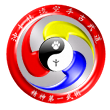Brief History of Karate Do
The history of Karate Do has come down to us through oral records over the centuries. It is recorded, that in the mid. 5th century A.D. an Indian Buddhist monk traveled to the Shaolin Monastery in China, where he discovered unfit monks afraid to venture out into the country to spread their faith. The visitor, known as Bodhidarma (Chinese) or Dharuma (Japanese), taught the Shaolin monks a combination of Ch'an meditation (Zen in Japanese), breathing, and fighting techniques principally for the improvement of their own health. The martial virtues of discipline, humility, restraint and respect are attributed to his philosophy. Over time, this fighting system was further developed by the monks and with the incorporation of local martial methods become the art known as "Shaolin Temple Boxing".
A number of significant events occurred during the 14th and 15th centuries with the growth of strong trade ties between China and offshore islands of the Ryuku chain (Okinawa-Japanese):
- A trade and political delegation consisting of 36 Chinese families and businessmen officially settled on Okinawa in the late 1300's. These families brought with them a variety of skills, including Chinese martial arts.
- The islands were then first unified by King Sho Hashi in 1429.
- In 1477, King Sho Shin started the next Sho dynasty by destroying the former and soon decreed that all arms were banned on the islands, as a result the emphasis on the Te (empty hand) fighting arts were driven underground and so progressed secretly.
In 1609, Okinawa was seized by the Japanese Satsuma Samurai clan, for refusing to recognize Japan's newest Shogun, Tokugawa Ieyasu. Following the successful invasion the Shogunate banned the Okinawa people from carrying weapons yet again, which only further fueled the importance of developing the martial arts as a means of survival. All training was done in secret and in small groups. Letters of introduction to the new Sensei from a practitioner's current teacher or person of influence were usually required if students were to be taught new or advanced arts. This secret training also provided the impetus for the adaptation of traditional tools as weapons.
During the development of what we now know as Karate-Do, different Ryu (styles) came about through the studies of the various Chinese Chuan Fa arts, introduced into Okinawa by those 36 families and by the many noted Okinawan practitioners traveling to China and studying for many years (principally Fujian province). Upon returning home these now skilled Martial artists, began teaching in their home villages, blending this new knowledge with the local martial arts traditions. These blended arts developed their own flavours in the villages where the practitioners settled. The different styles of karate were named for these districts and towns, such as Naha-te, named for Naha - Okinawa's capital; or Shuri-te, named for Shuri - the home of Okinawa's ancient kings; and Tomari-te, named for the port of Tomari. Later, Naha-te, with its circular movements and emphasis on internal strength, developed into Goju Ryu, Shuri-te, known for its speed, combined techniques and natural linear movements, developed into Shorin Ryu and Tomari-te, the combination of both, soon became part of Shuri-te. These are the roots of modern Karate Do in all its forms as many organisations were publicly formed to promote the arts. Over the centuries of occupation, the now direct Japanese influence saw the martial arts and philosophies of the Samurai finding their way into the local self defence systems.
It was not until the early 20th century that the formalisation of the name "Karate Do" came into being and training continued to spread into and through the school system of Okinawa and to Japan’s main land. After the Second World War the Ryukyu islands' arts spread around the world.



